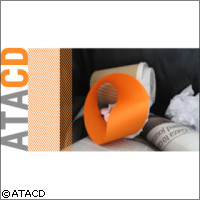Understanding cultural dynamics
Maths and culture might seem an unlikely match, but not for researchers in the EU-funded ATACD ('A topological approach to cultural dynamics') network. They are showing how the mathematical discipline of topology can help us better understand different kinds of social and cultural changes caused by such things as migration, markets and new technologies. Topology includes the study of how items are arranged or mapped in a network. Rather than focusing on distances between these items, topology concentrates on the relation between the items. A commonly cited example of topology is a metro map; although it will not reliably tell you how far it is between stops; it will tell you how the metro lines connect them. Every aspect of culture is subject to forces of change. Topology can be useful for studying these changes because it can map all the links, relationships and transformations that occur between cultural elements. Two principle developments in recent years prompted researchers studying cultural dynamics to turn to topology, explains ATACD project coordinator Professor Celia Lury. Genetic studies are showing that our behaviour and how diseases develop are influenced by our genetic material. These studies have helped to shed light on the longstanding 'nature versus nurture' debate about the relative importance of upbringing, experience, and learning ('nurture'), and heredity or genetic inheritance ('nature'), in determining a person's personality and intelligence. 'These recent developments in life sciences have made it easier to think in terms of nature and nurture, and contributed to the emergence of complex understandings of causality, determination, creative evolution, communication and change,' explains the Professor Lury. Such changes to our perception of ourselves undoubtedly influence our lives and how culture develops. 'If biology and natural explanations [about who we are] change, understandings of culture also have to change,' the professor told CORDIS News. ''Topological approaches have proved very useful in the life sciences. The network is exploring their potential in relation to culture.' Another important development has been the growth of information and communication technologies, which are also affecting how we communicate and live. 'More people are connected in more ways; these connections are continuously recorded and can be stored in databases, and can thus be made available for analysis,' explains Professor Lury. 'Commercial and political interests and governments have a great interest in developing ways of using this data for understanding culture but the techniques for doing this are only just being developed,' she adds. A topological approach, using network analysis, could for instance be useful in census population exercises, says Professor Lury. In an age of increasing migration, mobility and complex living arrangements, traditional population census methods, which register a person to one residence, can provide a very deceptive demographic picture. 'Population census used today assumes that people are sedentary when they are not,' explains Professor Lury. Some elements of topological thinking have already been used in the study of culture change, but only in a limited way and within the confines of individual disciplines. Funded to the tune of €643,797 under the 'New and emerging science and technology' (NEST) priority of the Sixth Framework Programme (FP6), the three-year ATACD project brings together some 20 partners from a myriad of disciplines, including sociology, psychology, politics, neuroscience, web-based information systems, all of whom are applying topology to their work. The project hopes that this multidisciplinarity will generate new techniques and patterns of thought for studying cultural and societal changes in four specific areas: markets and innovation; space, transition and migration; new technologies, including the internet; and mind, memory and language. In a world that is in a constant of change, the project hopes to help us cope better by understanding how culture evolves. The project will finish in 2010 and will host a conference to highlight the results.



